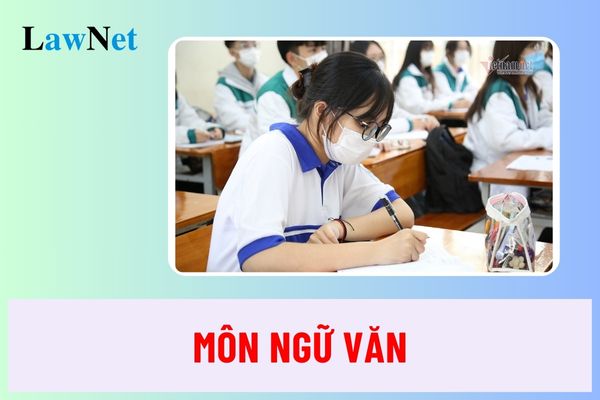What are contents included in grade 8 Literature curriculum in Vietnam?
What are contents included in grade 8 Literature curriculum in Vietnam?
Based on Sub-Section 2, Section 5 of the Literature Curriculum in the General Education Program issued with Circular 32/2018/TT-BGDDT, the content of the Literature Curriculum for grade 8 students includes:
(1) CONTENT OF VIETNAMESE LANGUAGE KNOWLEDGE
- The meaning of some relatively common idioms and proverbs
- Nuances of words and word choice
- Onomatopoeic and mimetic words: characteristics and effects
- The meaning of some common Sino-Vietnamese elements (e.g., vo, huu) and the meaning of words containing these elements (e.g., vo tu, vo hinh, huu quan, huu han)
- Particles and interjections: characteristics and functions
- Independent components in sentences: characteristics and functions
- Declarative, interrogative, imperative, exclamatory sentences; affirmative and negative sentences: characteristics and functions
- Rhetorical devices like inversion and rhetorical questions: characteristics and effects
- Explicit and implicit meanings of sentences
- Types of paragraphs: inductive, deductive, parallel, and coordinated: characteristics and functions
- Types and genres of texts
+ Narrative texts: a story about a trip or social activity
+ Expressive texts: six-syllable and seven-syllable poems; a paragraph expressing thoughts on a six or seven-syllable poem
+ Argumentative texts: thesis, points, reasoning, and evidence; a discussion on a life issue; an analysis of a literary work
+ Informational texts: objective information, subjective opinions, and the purpose of the text; explanatory text on a natural phenomenon; book introduction; petition
- Common and regional vocabulary: functions and values
- Social dialects: functions and values
- Non-verbal communication tools: images, figures, charts, etc.
(2) CONTENT OF LITERATURE KNOWLEDGE
- Imagination in literary works
- Titles and ways to title texts
- Themes and topics, ways to identify themes; structure
- Plot, context, characters, language in stories, historical stories
- Single-threaded and multi-threaded plots
- Main artistic techniques of satirical poetry
- Some elements of poetic law in seven-word eight-line poems and four-line poems of the Tang Dynasty: composition, rhyme, rule, rhythm, and parallelism
- Some formal elements of a poem: words, images, composition, emotional flow
- Conflict, actions, characters, dialogues, satirical techniques in literary scripts (comedies)
- Some formal elements of free verse (six, seven words): number of lines, words, rhyme, rhythm
- Readers and their individual responses to a literary text
- Content reflections and author's perspectives on life and humans

What are contents included in grade 8 Literature curriculum in Vietnam? (Image from the Internet)
What are literary materials of the Literature Curriculum for grade 8 Students in Vietnam?
Based on Sub-Section 2, Section 5 of the Literature Curriculum in the General Education Program issued with Circular 32/2018/TT-BGDDT, the Literature Curriculum for grade 8 includes:
(1). Literary texts
- Humorous stories, short stories, historical stories
- Satirical poetry, seven-word eight-line poems, four-line poems of the Tang Dynasty; six, seven-syllable poems
- Comedies
(2). Argumentative texts
- Social arguments
- Literary arguments
(3). Informational texts
- Explanatory texts on natural phenomena, book introductions
- Petitions
What are rights of grade 8 students in Vietnam?
According to Article 35 of the Regulation on Lower Secondary Schools, Upper Secondary Schools, and Multi-level Schools issued by the Ministry of Education and Training with Circular 32/2020/TT-BGDDT, grade 8 students have the following rights:
(1) To be equal in access to a holistic education, be assured of conditions regarding time, facilities, hygiene, and safety for studying at school and self-studying at home; to be provided with information about their academic performance and behavior, to use equipment and facilities for learning, cultural, and sports activities of the school as stipulated.
(2) To be respected and protected, to be treated equally and democratically, to have the right to lodge complaints with the school and educational management authorities regarding decisions affecting themselves; to be allowed to transfer schools for valid reasons according to current regulations; to study ahead of their age, to move up a class, to study at an older age than the regulated age according to Article 33 of the Regulation on Lower Secondary Schools, Upper Secondary Schools, and Multi-level Schools issued by the Ministry of Education and Training with Circular 32/2020/TT-BGDDT.
(3) To participate in activities to develop talents in subjects, sports, and arts organized by the school if qualified.
(4) To receive scholarships or other support as stipulated for students eligible for social policies, those in difficult living situations, and students with special abilities.
(5) To transfer schools if eligible under the regulations; the transfer procedures are implemented according to the provisions of the Minister of Education and Training.
(6) To enjoy other rights as defined by law.

